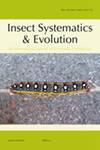Integrative taxonomic revision of the New Caledonian endemic genus Taophila Heller (Coleoptera: Chrysomelidae, Eumolpinae)
IF 1.3
3区 农林科学
Q2 ENTOMOLOGY
引用次数: 3
Abstract
There are 96 endemic species of Eumolpinae (Coleoptera: Chrysomelidae) described from New Caledonia, but some estimates propose that the actual number could be at least twice this figure. Not surprisingly, when a particular species assemblage has been revised, the number of species in that group increases significantly. Here, we revise the New Caledonian endemic genus Taophila Heller, 1916, the best studied in this fauna and currently known to include eleven species, one in the subgenus Jolivetiana Gómez-Zurita & Cardoso, 2014, and ten in the nominal subgenus. The analysis of morphological differences in a large sample of Taophila and the validation of the resulting species hypotheses in an integrative fashion based on a phylogenetic analysis of partial mtDNA sequences (cox1 and rrnS) resulted in the addition of eleven more taxa. Taxonomic splits mainly reinterpreted the previous observation of mtDNA paraphyly affecting T. subsericea Heller, 1916, shown to represent a complex of species mostly distinguishable by diagnostic differences among females. The new species described are: T. bituberculata n. sp., T. carinata n. sp., T. dapportoi n. sp., T. davincii n. sp., T. draco n. sp., T. goa n. sp., T. hackae n. sp., T. samuelsoni n. sp., T. sideralis n. sp., T. taaluny n. sp. and T. wanati n. sp. These additions and the synonymy T. subsericea Heller = Stethotes mandjeliae Jolivet, Verma & Mille, 2010 n. syn., bring to 21 the total number of species in Taophila. Moreover, we also found the first evidence of mtDNA introgression between species of New Caledonian Eumolpinae, resulting from putative recent hybridization of T. subsericea and T. dapportoi where these species coexist. We describe a model incorporating the mtDNA genealogy of T. subsericea about the conditions that may have favored the secondary geographic encounter required for the hybridization of these species.新喀里多尼亚特有属Taophila Heller的综合分类修订(鞘翅目:金毛蝇科,金毛蝇科)
新喀里多尼亚描述了96种地方性的金毛蝇科(鞘翅目:金毛蝇科),但一些估计认为实际数量可能至少是这个数字的两倍。毫不奇怪,当一个特定的物种组合被修改时,该组中的物种数量显着增加。本文对新喀里多尼亚特有属Taophila Heller(1916年)进行了修订,该属是该动物群中研究最充分的,目前已知包括11种,其中1种属于Jolivetiana亚属Gómez-Zurita & Cardoso, 2014年,10种属于名义亚属。对Taophila大样本的形态差异进行分析,并基于部分mtDNA序列(cox1和rrnS)的系统发育分析,以整合的方式验证了由此产生的物种假设,从而增加了11个分类群。分类学上的分裂主要是重新解释了先前对T. subsericea Heller(1916)的mtDNA部分影响的观察,表明它代表了一个主要通过雌性之间的诊断差异来区分的物种复合体。新发现的物种有:T. bituberculata n. sp, T. carinata n. sp, T. dapportoi n. sp, T. davincii n. sp, T. draco n. sp, T. goa n. sp, T. hackae n. sp, T. samuelsoni n. sp, T. sideralis n. sp, T. taaluny n. sp和T. wanati n. sp。这些新发现和同义的T. subsericea Heller = Stethotes mandjeliae Jolivet, Verma & Mille, 2010 n. syn,使Taophila的物种总数达到21个。此外,我们还首次发现了新喀里多尼亚真马科物种间mtDNA渐入的证据,这可能是由于T. subsericea和T. dapportoi最近在这两个物种共存的地方进行了杂交。我们描述了一个模型,该模型结合了亚绢金雀花的mtDNA谱系,关于这些物种杂交所需的次要地理相遇可能有利的条件。
本文章由计算机程序翻译,如有差异,请以英文原文为准。
求助全文
约1分钟内获得全文
求助全文
来源期刊

Insect Systematics & Evolution
生物-进化生物学
CiteScore
3.00
自引率
0.00%
发文量
15
审稿时长
>12 weeks
期刊介绍:
Insect Systematics & Evolution (ISE) publishes original papers on all aspects of systematic entomology and the evolutionary history of both extant and extinct insects and related groups. Priority is given to taxonomic revisions and phylogenetic studies employing morphological and molecular data. ISE also welcomes reviews and syntheses that can appeal to a wide community of systematic entomologists. Single species descriptions, regional checklists, and phylogenetic studies based on few taxa or single molecular markers will generally not be accepted.
 求助内容:
求助内容: 应助结果提醒方式:
应助结果提醒方式:


